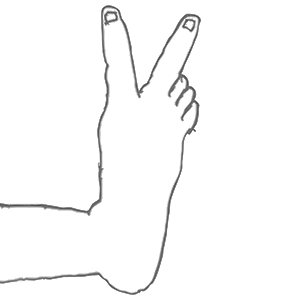The Polish School of Posters refers to a highly influential artistic movement that emerged in Poland after World War II, primarily from the 1950s through the 1980s, characterized by its unique graphic design style, particularly in the realm of poster art.
Despite the restrictions of the communist regime, Polish poster artists enjoyed a surprising degree of creative liberty compared to other art forms. They often used surreal, abstract, and metaphorical illustrations to convey complex ideas and emotions, and many posters served as subtle critiques of the political and social realities of the time. Posters featured vivid colors, strong contrasts, and simplified forms to create eye-catching, impactful designs. Distinctive, expressive lettering was hand-drawn and integrated into the overall composition.
Notable artists associated with the Polish School of Posters include Henryk Tomaszewski, Jan Lenica, Roman Cieślewicz, and Franciszek Starowieyski. These artists often created posters for cultural events, such as films, theater performances, and music festivals.
By utilizing characteristics such as painterly gesture, linear quality, and vibrant colors, as well as individual personality, humor, and fantasy, the Polish poster made the distinction between designer and artist less apparent. Posters of the Polish Poster School significantly influenced the international development of graphic design in poster art. Influenced by the vibrant colors of folk art, they combine printed slogans, often hand-lettered, with popular symbols, to create a concise metaphor. As a hybrid of words and images, these posters created a certain aesthetic tension. In addition to aesthetic aspects, these posters revealed the artist’s emotional involvement with the subject. They did not solely exist as an objective presentation, rather they were also the artist’s interpretation and commentary on the subject and on society.
In its early years, the Polish People’s Republic (1947-1989) was in a phase of rebuilding its cultural institutions. In the post-war economy under bureaucratic censorship and regulation, Polish artists had limited artistic opportunities, but they were able to use the poster as their means of artistic expression and career. Some reasons the poster continued to thrive during this time period were the reopening of cultural venues such as theatres for cinema and performances as well as the state sponsorship of poster making.
Before the Polish School of Posters, during the Stalin era, Socialist Realism was the only sanctioned aesthetic for the fine arts and design in Poland. Not to be confused with Social Realism which also depicted the working class, Socialist Realism in Poland was used solely as propaganda for the communist government. Socialist Realist posters depicted the elevated laborer pursuing the state’s political goals using a strictly realist style. Due to the vetting process for the arts, artists couldn’t exhibit abstract or subjective work, but they were able to use symbolism, metaphor, and allusion to convey their ideas.
Those visual techniques became characteristic of poster designers of the Polish School of Posters and near the mid 1950s, as Stalin-era repressions loosened and state sponsorship of poster making continued, poster designers gained more artistic freedom. Furthermore, unlike their Western counterparts who had to produce profitable ad content in a free market context, Polish artists operated without such pressures thanks to State funding.
The title Polish School of Posters was first applied to the Warsaw Academy of Fine Arts in the early 1950s and may have been first used by designer Jan Lenica. In this academy, poster making was given its own category and was seen as an equal to the institution’s other artistic disciplines. Often Polish posters of this era were not a super effective forms of advertisement, nor were they necessarily meant to be, rather they were made for the purpose of being works of art. Many of these posters were witty, humorous, and included fantastical and allegorical elements in their design. Critics experienced difficulty trying to find the common thread between these posters because of their individuality, but they tended to group them by their painterly gesture and linear style and traced their vibrant colors back to folk art.
The Daily Omnivore
Everything is Interesting



Leave a comment